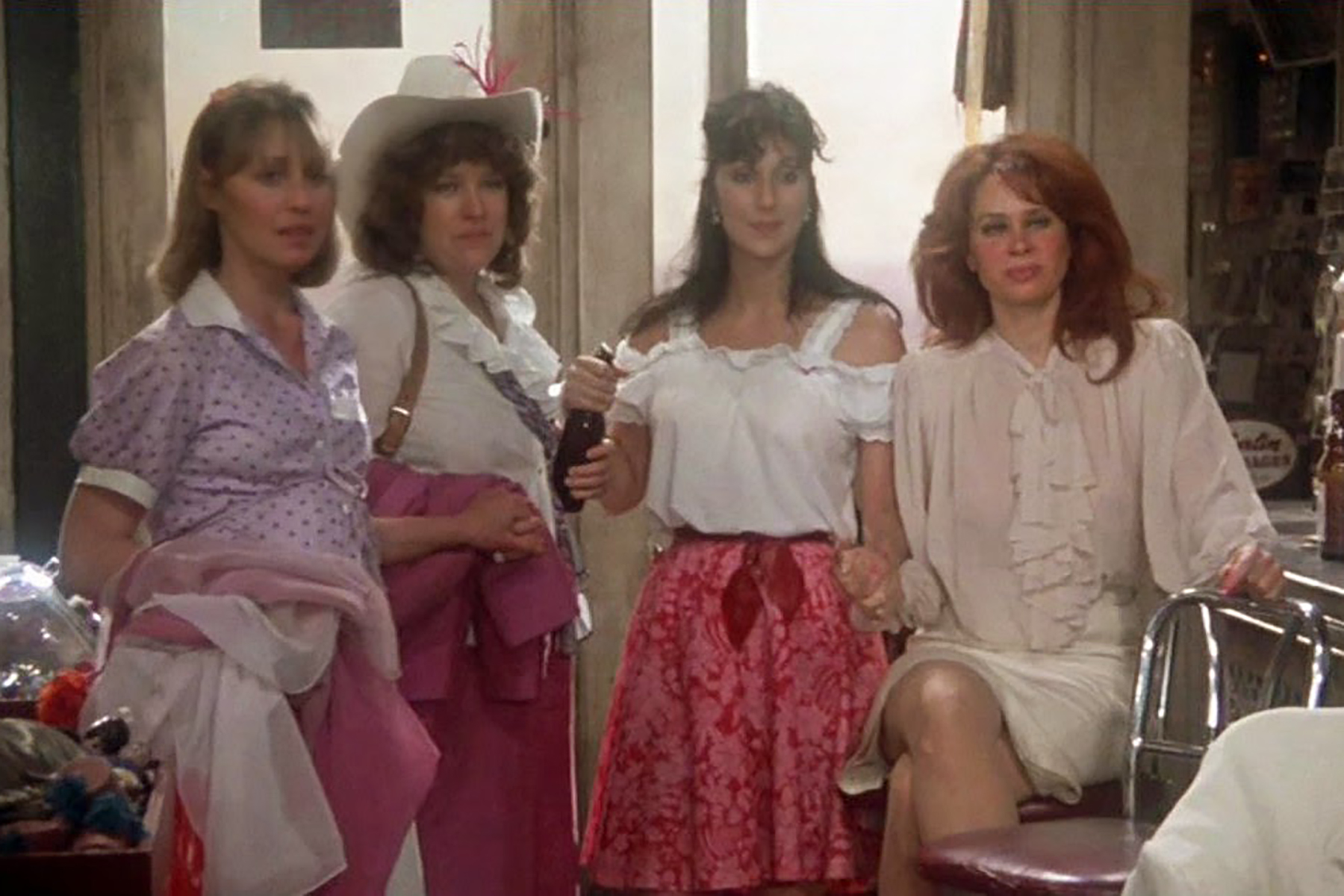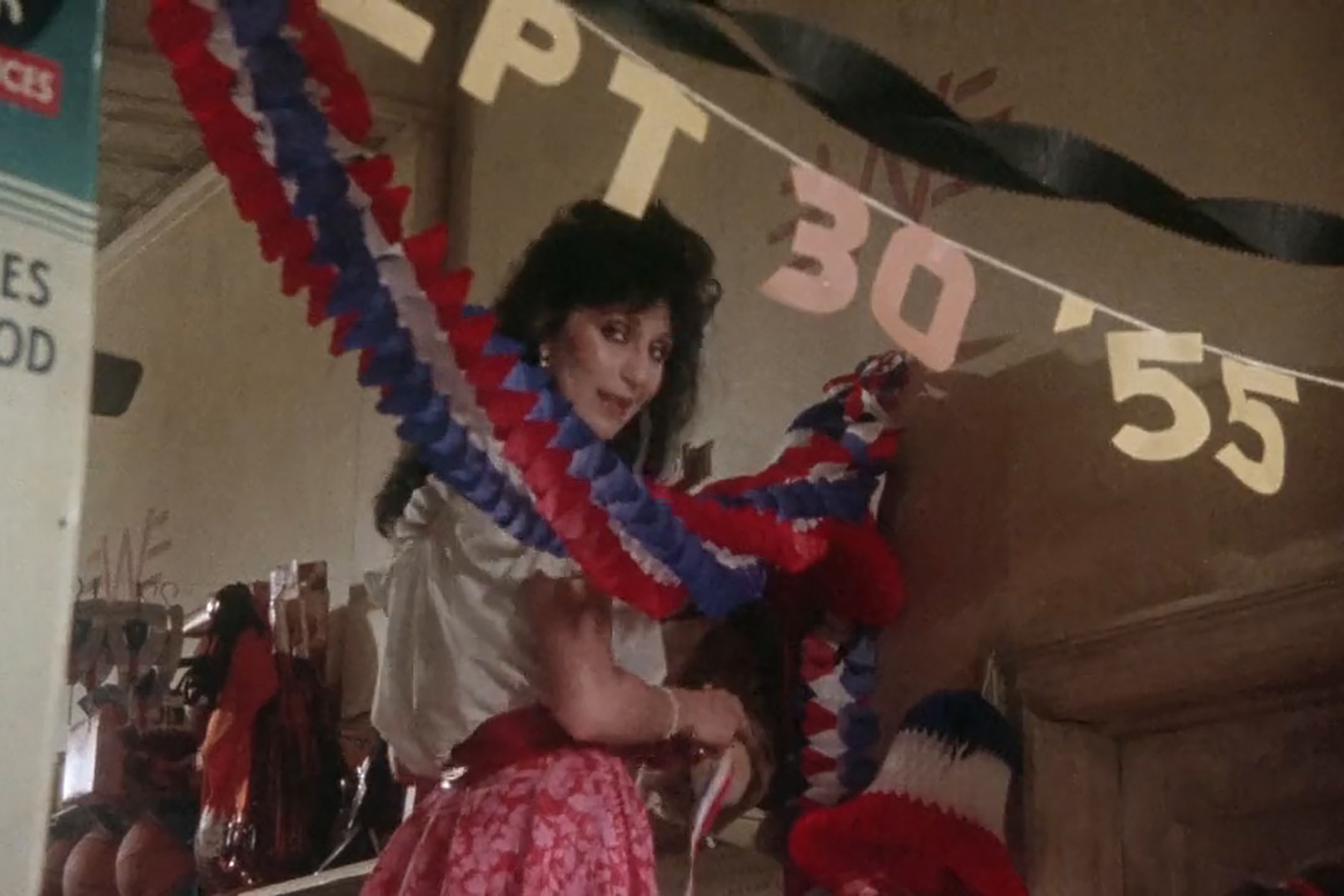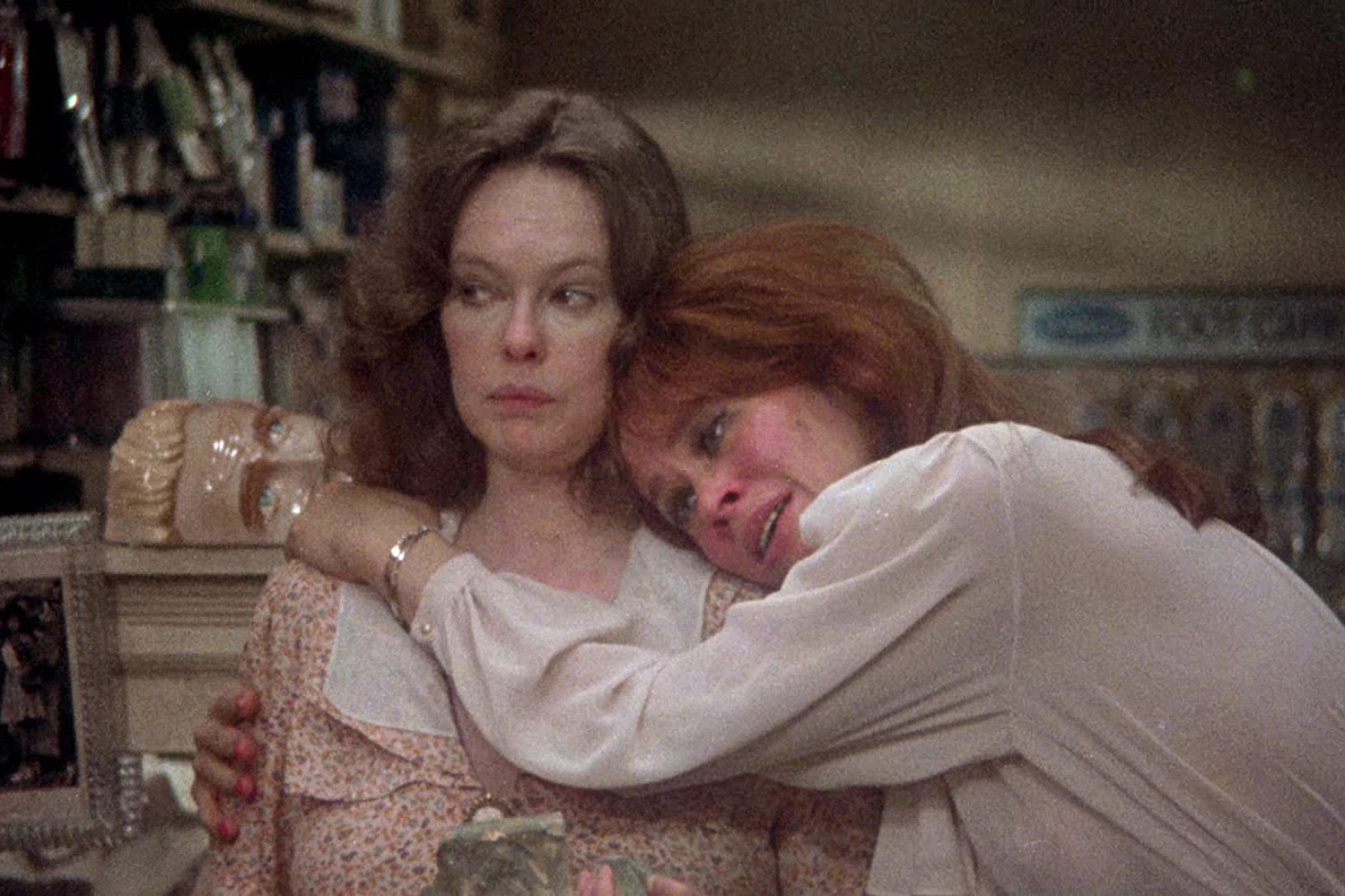
- Industry
Out of the Vaults: Come Back to the 5 and Dime Jimmy Dean, … (1982)
In the wake of a series of unsuccessful movies like Quintet, A Perfect Couple, and Health, culminating with the tanking of Popeye in 1980, director Robert Altman sold his film company to Lions Gate, pulled up stakes in Los Angeles, and moved to New York with the idea of working in the theater and adapting plays for films. He vowed never to work with big film studios again.
The first project he took on was the direction of the Broadway production of Ed Graczyk’s play Come Back to the 5 and Dime Jimmy Dean, Jimmy Dean. The play starred Sandy Dennis, Cher, Karen Black, Kathy Bates, Sudie Bond, Marta Heflin, and Mark Patton. It closed after 52 performances.
Undeterred, Altman decided to make a movie version with the same cast.
The film is set in 1975 in the fictional town of McCarthy, Texas, 62 miles from Marfa where Elizabeth Taylor, Rock Hudson, and James Dean shot Giant. In the story, a reunion of the Disciples of James Dean, a fan club, marks the 20th anniversary of Dean’s death in a dime store that is set up as a shrine to the late actor. Juanita (Bond) runs the store; Cher plays the gregarious Sissy who works with her; Mona, played by Dennis is the fragile leader of the club; Bates is Stella Mae who married a rich man and moved away, and Edna Louise is played by Heflin, permanently bullied and pregnant with her seventh child. As the women catch up on their lives, the narrative changes when glamorous Joanne (Black) walks in, unrecognized by them until the dramatic denouement: she is their old friend Joe after a sex change operation.
Altman shot the film in 19 days. In a series of ingenious flashbacks interspersed with the present-day action, using two-way mirrors built especially for the purpose, he moved the action back and forth twenty years, relying on the actors to convince the audience of the time changes, eschewing all makeup and costume changes to do so (he used the same stage set from the movie adapted for filming.) And so through the flashbacks, the story becomes more about the lives of the women in the past twenty years, and the secrets and lies they have lived with, than a tribute to Dean. As Mona describes the facades of Giant on which she was an extra, it becomes clear that the theme of the movie is the facades that the women have built for themselves and the lengths they go to preserve them till they crumble.

Cher, in only her third movie role, is a standout and got a Golden Globe nomination as Best Supporting Actress for playing Sissy. Altman was planning to cast Shelley Duvall in the role, but auditioned Cher on her request and ended up casting her. The rest of the cast is wonderful as well, though Heflin’s and Bates’ characters are rather underwritten, despite the very talky script that was also written by Graczyk. The whole action is still confined to the dime store as in the stage play, and every so often a character will step outside of the store’s entrance to shout to unseen people, enhancing the staginess of the piece. Altman’s roving camera helps to mitigate that somewhat, as do the closeups, mostly on Dennis, who arguably has the most dramatic scenes. His direction and the ensemble acting rescues the film from the inherent soapiness of the storyline.

One has to make special note of the handling of a transsexual character at a time when not one was seen in mainstream cinema, let alone treated sympathetically. It is easy to forget the shock value of Joanne’s place in the story back in 1982 when seen through the prism of today’s times.
While it received a ten-minute standing ovation at the Chicago Film Festival in 1982 and won the Gold Hugo Award for Best Feature, contemporary movie critics were not kind. Vincent Canby writing in the New York Times was savage: “Ed Graczyk’s screenplay, based on his flop play as directed by Mr. Altman on Broadway this year, is small, but less likely to be salvaged in the near future than even the Titanic. It’s a sincerely preposterous, pathetic, redneck comedy-drama that sounds as if its author had learned all about life by watching ‘Studio One’ at his mother’s knee.” With that kind of notices and a limited release in art-house theaters, the film grossed $840,958 domestically, then aired on Showtime the following year.
was restored in 2011 by the UCLA Film and Television Archive, with funding from the Hollywood Foreign Press Association and The Film Foundation.
Working in collaboration with Paramount Pictures, Cineric Laboratories created a 35mm blow-up color internegative directly from the Super 16mm original camera negative, which was scanned and digitally cleaned up to remove the excess dirt which marred the original. Title sequences and additional pickups were scanned directly from the 35mm CRI (color rendering index) material. NT Picture & Sound output the restored picture and track negative to 35mm film.
The restoration premiered at the Billy Wilder Theater as part of the UCLA Festival of Preservation in March 2011 and was introduced by its director, Dr. Jan-Christopher Horak.

